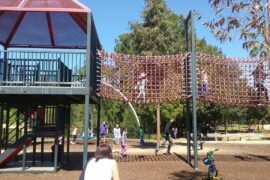Understanding Deciles: A Parent’s Guide to Demystifying Education Metrics
Welcome, inquisitive parents! Are you eager to make sense of the term deciles that often pops up in conversations about school rankings and student achievements? Look no further! This comprehensive guide will illuminate the world of educational metrics and what deciles signify, ensuring you’re perfectly equipped to understand their impact on your child’s education. So, grab your favorite beverage, settle in, and let’s decode the deciles together!
What Are Deciles Anyway?
In the realm of education, deciles are a statistical measure that helps to categorize different schools or student results into ten equal parts based on performance metrics such as test scores or other achievement data. Imagine slicing a cake into ten even pieces; each piece represents one decile. Schools or students are placed into these ‘pieces’ by comparing their performance with others, and voila! You have a decile ranking system.
Why Deciles Matter for Your Child’s School
At its core, deciles can provide a snapshot of where a school stands in terms of educational outcomes compared to others. While it’s not a definitive measure of quality, it does offer a general idea of a school’s academic environment. Deciles can influence resources, funding, and even the perception of a school’s status. As responsible parents, gaining a thorough understanding of deciles can be instrumental in making informed decisions about your child’s education journey.
Breaking Down the Decile Ranking System
The decile ranking system typically sorts schools into a scale of 1 to 10. Those at the lower end (decile 1) often signify schools that may face challenges such as lower socio-economic status populations, while schools at the higher end (decile 10) usually indicate a higher socio-economic status community. It’s important to note, however, that a school’s decile is not a direct measure of educational quality or student capability.
Deciles and Education Equality
A fundamental aspect of deciles is their role in addressing educational equality. By identifying schools that serve lower socio-economic communities, governments and educational bodies can work to allocate resources and support where they are needed most. This ensures that every child has access to quality education, regardless of their socio-economic background. Understanding deciles enables you to advocate effectively for your child and their school.
The Big Picture: Deciles in the Educational Landscape
Deciles are just one facet of a complex educational landscape. While they are useful, it’s clear they are not the only indicator of a school’s success or student potential. Holistic approaches to evaluating educational quality, involving both quantitative data like deciles and qualitative assessments like teaching quality and school culture, provide a fuller picture of a school’s environment.

Understanding Deciles: A Parent’s Guide to Demystifying Education Metrics
Hey there, super parents! ? Ready to crack the code on deciles that often mystify school reports and student rankings? Buckle up for a cheerful, insight-packed journey into the world of educational metrics, where we unravel what deciles mean and why they’re key to understanding your child’s academic surroundings.
The ABCs of Deciles
Picture slicing a delectable pie—yum, pie!—into ten even slices. Each slice represents a decile. Schools and student performances are sorted into these slices by comparing them against a specific benchmark. This forms a decile ranking system that helps us see how schools stack up in the grand education pie.
Decile Deets: A Parent’s Must-Knows
- Deciles and School Funding: Often, schools in lower deciles receive more funding to level the playing field, ensuring they have the resources to empower student success.
- Deciles Aren’t Destiny! A school’s placement in a particular decile doesn’t determine the quality of education your child will receive—there’s so much more to a school than its decile rank.
- A Closer Look: Are you contemplating moving your child to a different school based on decile rankings? Hold that thought! Let’s dig deeper into what the school offers beyond numbers—like extracurricular programs, teacher engagement, and community vibes.
- A Misunderstood Metric: Deciles aim to reflect socio-economic factors, not directly academic outcomes. Keep this in mind when interpreting what a decile means for a school’s achievements.
- Advocacy is Key: Being savvy about deciles means you can champion for your child and their school more effectively, advocating for the resources and attention they deserve.
The Bigger Picture in Education
Deciles are a piece of the puzzle, but the full educational picture encompasses a symphony of factors. It’s important to consider a wide array of elements like teacher dedication, student engagement, and the overall atmosphere, which contribute just as much to your child’s growth and learning.
See more great Things to Do with Kids in New Zealand here. For more information see here
Disclaimer
The articles available via our website provide general information only and we strongly urge readers to exercise caution and conduct their own thorough research and fact-checking. The information presented should not be taken as absolute truth, and, to the maximum extent permitted by law, we will not be held liable for any inaccuracies or errors in the content. It is essential for individuals to independently verify and validate the information before making any decisions or taking any actions based on the articles.




